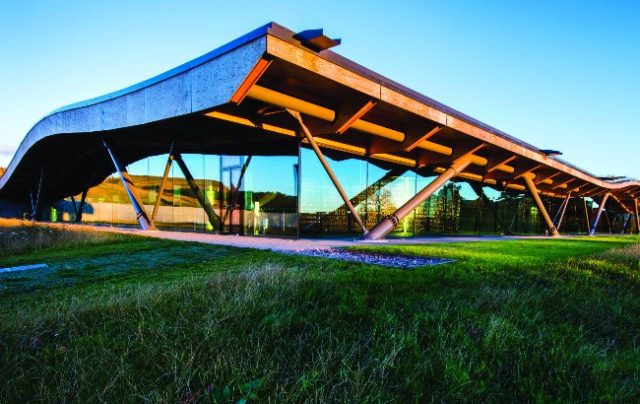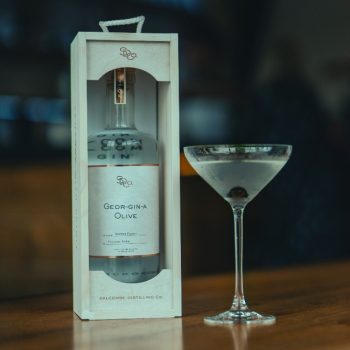Customer attraction: the rise of spirits tourism
The rise in popularity of visitor centres is set to grow, as producers use the experiences to attract and nurture spirits fans. We look at the importance of tourism to the drinks industry.

*This article was first published in the September issue of The Spirits Business magazine.
In 1969, Glenfiddich became the first distillery to open a visitor centre for tourists – an attraction offering guests an insight into the world of its Scotch whisky production. Five decades on and tourism is now integral to the business plans of spirits companies in every category around the globe, with unforgettable consumer experiences widely considered as being one of the best ways to recruit new drinkers.
According to data from the Scotch Whisky Association, 2019 saw 2.2 million visits to Scotch whisky distilleries, an activity most popular with overseas tourists who are usually first-time visitors to Scotland.
Meanwhile in Finland, Kyrö Distillery reported that last year 14,000 visitors from around the world flocked to visit its home in Isokyrö – the world’s northernmost rye whisky distillery. Its popularity is so great, it also attracts equally large numbers to its festival, Kyröfest, every August.
In Ireland, whiskey tourist numbers grew by 54% in the four years leading to 2019, when it exceeded the one million mark for the first time, thanks to the 21 visitor centres located at brand homes across the country. In France, more than 120 spirits companies open their doors to more than 1.6m guests annually for tours, events and tastings.
Huge investment
In 2018, Diageo announced a £185m (US$255m) investment in Scotch whisky tourism, which included an extensive upgrade of its visitor centres, as well as a new 71,500-square-foot Johnnie Walker experience in Edinburgh. The space, which opened on Princes Street late last summer, includes a ‘state-of-the-art’ retail space, and two rooftop bars where visitors can enjoy the catalogue of Johnnie Walker whiskies in a variety of formats.
However, this eight-storey paean to the Scotch brand wasn’t created for the die-hard fans. Ewan Andrew, Diageo’s president of global supply and procurement, and chief sustainability officer, explained: “What we’re seeing at Johnnie Walker Princes Street is that 76% of visitors coming through the doors are tasting whisky for the first time, and that’s great from a recruitment perspective for the category.
“This year we partnered with Edinburgh Festival Fringe, the biggest ticketed event outside of the Olympics globally, so there is real potential for us to continue this recruitment momentum with Scotch.”
Diageo CEO Ivan Menezes added: “We believe that brand experiences well done have a significantly positive impact in building desirability for a brand. Our experience with Johnnie Walker Princes Street is that people who come through the door get absolutely captivated by the brand, and tend to become life-long advocates.” Advocacy is a huge draw for brands when it comes to implementing a tourism arm to their business.

Whistlepig distillery, located on a 202-hectare farm in the US state of Vermont, offers two off-site tasting rooms: the Whiskey Parlour in Quechee, and The Whistlepig Pavilion in Stowe. “These allow consumers to have an interaction with us and try all of our products,” said head blender Meghan Ireland.
“Education is a big part of things for our brand – we’ve always liked people to try our products so we can explain and educate consumers about them.”
Brand loyalty
However for some brands, tourism is about cementing already established brand loyalty. “Our focus is on providing emotional advocacy rather than guest numbers,” said Stuart Cassells, general manager at The Macallan Estate. “We very rarely have visitors who are entirely new to the brand, and as such The Macallan Estate is focused on providing an immersive brand experience rather than recruiting new consumers.”
In 2018, The Macallan opened its £140m distillery on the banks of the River Spey as ‘the ultimate expression’ of the brand. Cassells said: “Our most engaged and passionate consumers are committed to making the pilgrimage to the home of The Macallan. All our guest experiences share one common theme: to take them on a journey of discovery, delving into the heritage, dedication to incomparable craftsmanship and creativity of the whisky-making process for which The Macallan is renowned.”
Unlike many distillery experiences found along Speyside’s 74-mile-long Malt Whisky Trail, where tours and tastings hover around the £15 mark, The Macallan’s entry-level Discovery Experience, which includes a two-and-a-half hour guided tour, and a tutored tasting of carefully selected Macallan whiskies, is priced at £50 per head.
Those willing to indulge a little further can opt onto the Mastery Experience, which includes a five-course dinner and whisky flight, and will set you back five times that amount. The elevated pricing doesn’t put people off, however. With tours fully booked almost four months in advance, it would seem the premium offering sets the brand apart from its neighbours, elevating tourists’ desires to immerse themselves in the brand.
For many brands opening visitor centres or distillery experiences, location is key. The Devon Rum Co recently revealed the opening of its new headquarters.
“Moving to Salcombe has created many new and exciting opportunities for Devon Rum Co,” explained head of marketing Brad Wicks. “We now offer customers a unique experience that includes our first ever storefront, where they are able to sample and purchase our full range of artisan spirits. Being able to offer our customers tasting sessions and events is incredibly beneficial. After all, the most important part is what it tastes like.”

It’s not the only spirit brand that has seen the benefit of being headquartered in this part of the UK. In the years before the pandemic, Salcombe Distilling Co received more than 4,000 visitors to its Gin School, where guests receive a masterclass in the brand before distilling their own gin.
It is listed as Tripadvisor’s top ‘thing to do’ in the popular tourist town, and consistent five-star reviews have seen it awarded the Travellers’ Choice award for 2022.
Co-founder Howard Davies said: “Salcombe is a unique and iconic destination, and we like to think we play our part in maintaining its reputation as one of the most desirable places to visit in the UK.
“Visitors to our Gin School come from across the UK and further afield, and it is often one of the main reasons for visiting Salcombe, many build their itinerary around it. Year-round the Gin School helps bring visitors into the area who in turn need somewhere to stay and eat while in town, so we believe we bring substantial additional revenue to the area.”
The benefits of alcohol tourism ripple out into communities. More than 11,000 people are directly employed in Scotland’s whisky industry, of which more than 7,000 are in rural areas providing vital employment and investment in the Highlands and Islands.
Visit Scotland CEO Malcolm Roughead said: “The Scotch whisky industry recognises the importance of tourism, and in recent years we have seen growth in the number of visitor experiences on offer. Many of our distilleries are in more rural parts of Scotland, providing vital employment and investment.
“The expanded visitor offer will help support the recovery of Scotland’s rural economy following the pandemic with visitor spending supporting wider local accommodation, hospitality and retail businesses.”
Related news
Cocktail chat: Foco, Barcelona
